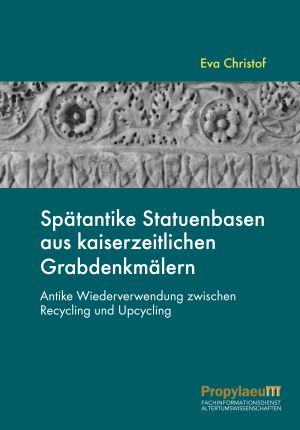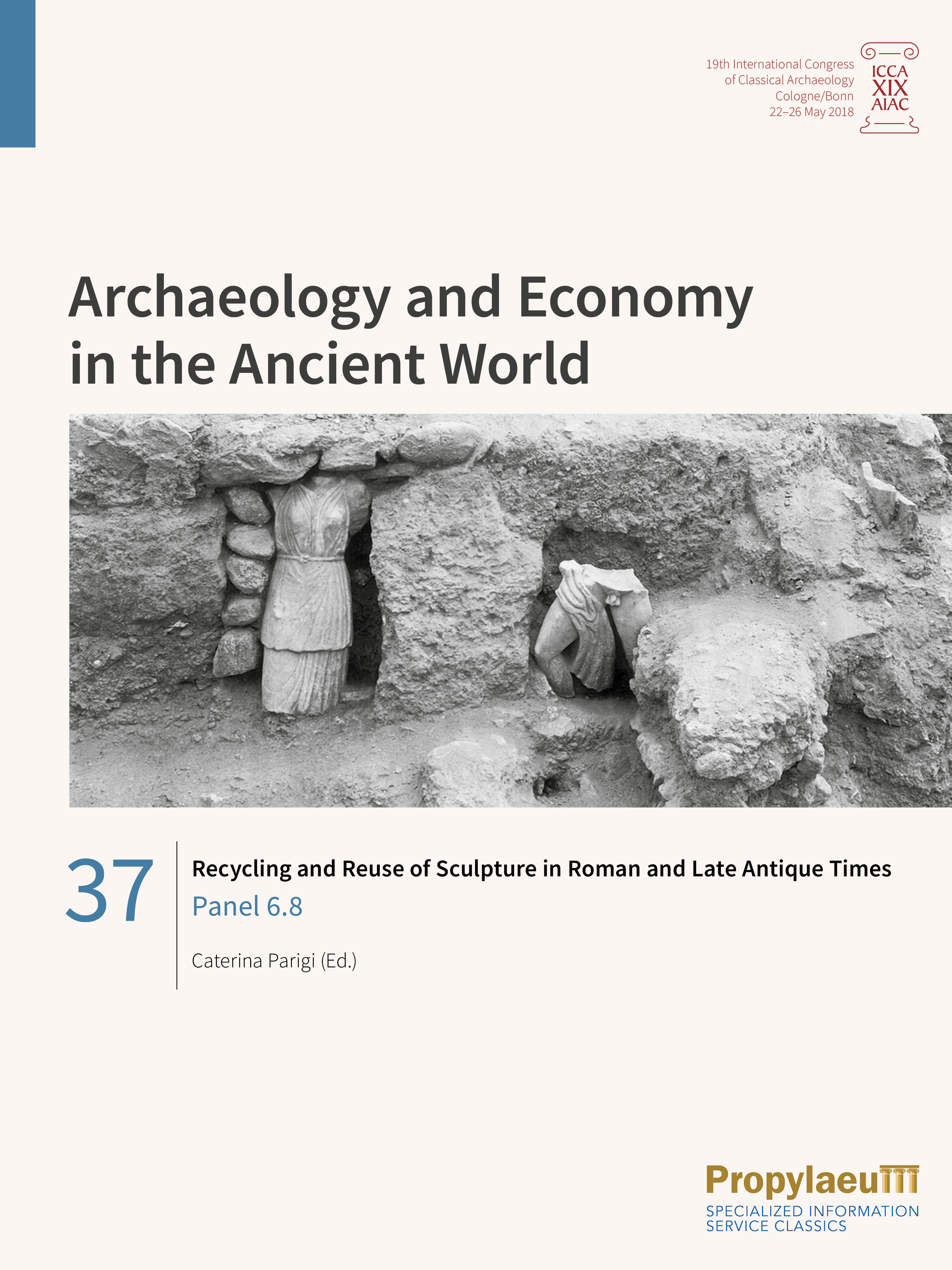Christof, Eva
Spätantike Statuenbasen aus kaiserzeitlichen Grabdenkmälern: Antike Wiederverwendung zwischen Recycling und Upcycling
The aim of this study was to re-examine the bases of Late Antique statues in Italy in order to identify all those which were not simply reused, but which had initially been used as funerary monuments. This identification is possible when the same stone not only bears a Late Antique statue inscription, but also an earlier funerary inscription. By analysing Late Antique statue bases for the first time according to archaeological criteria, the author was able to find many more examples of the reuse of such funerary monuments. Considerations based on different perspectives, such as different practices of ancient reuse, enable a comprehensive assessment of this phenomenon, which is described here for the first time.
Recycling and Reuse of Sculpture in Roman and Late Antique Times: Panel 6.8
Recycling and reuse of sculpture was a common practice in the ancient world, which took a variety of forms in different periods and places.
The volume stresses two main aspects in relationship to this practice, namely the reuse of sculptures and their parts as building material on the one hand and in their original function or as works of art on the other hand.
The reuse of sculpture has a number of socio-economical aspects. As the economic factor always plays an important role in recycling, it must always be taken into account. It is also important to remember the difficulty to purchase new sculptures in Late Antiquity. However, reuse and recycling are complex processes, which do not have a single cause and not only occur in Late Antiquity. The reuse of statues may also have had an aesthetic value and been seen as a reminder of former times of glory.
This volume focuses on the Roman and Late Antique periods, aiming to show the continuity and the complexity of the phenomenon. Through the comparison of different case studies in varying contexts, the papers highlight the common features and local singularities of this practice.








